#NNPA BlackPress
NNPA Leadership Launches New Community-Focused Initiative at Mid-Winter Conference in Fort Lauderdale
NNPA NEWSWIRE — “We must leave a footprint in all of the communities where we have a presence and where we are making an impact,” stated NNPA Chair Karen Carter Richards. “As we visit different cities, we must connect with the communities we serve and leave a lasting impression. In doing this initiative, we must also highlight the newspaper(s) in those respective cities to make sure they’re included in the effort. We must work collaboratively together and make every community remember that the NNPA was on the scene and should never be forgotten.”
The Red School House Chosen as Inaugural Recipient
NNPA Community Impact
By Jeffrey L. Boney, Associate Editor, Houston Forward Times
As part of the first phase of an established marketing plan for the National Newspaper Publishers Association (NNPA), the leadership of the storied organization announced the launch of their inaugural “NNPA Community Impact” initiative to kick-off the 80th Anniversary of the NNPA.
This initiative was championed by NNPA Chair Karen Carter Richards, who believes the NNPA should regularly highlight organizations that are making an impact, or people who are making a difference, in their respective communities, but rarely get the recognition they truly deserve.
“We must leave a footprint in all of the communities where we have a presence and where we are making an impact,” stated NNPA Chair Karen Carter Richards. “As we visit different cities, we must connect with the communities we serve and leave a lasting impression. In doing this initiative, we must also highlight the newspaper(s) in those respective cities to make sure they’re included in the effort. We must work collaboratively together and make every community remember that the NNPA was on the scene and should never be forgotten.”
Just this past week, at the start of the 2020 NNPA Mid-Winter Conference that was held in Fort Lauderdale, Florida, the NNPA put this initiative into action as they worked alongside local publisher Bobby Henry of The Westside Gazette to honor The Red School House as the “NNPA Community Impact” inaugural recipient.
“The Red School House has served the Fort Lauderdale community for more than 52 years and has taught and developed many upstanding African Americans who have moved on to make their own impact in various communities around the nation,” said Bobby Henry, Publisher of the Westside Gazette. “I was honored to work with the NNPA to select The Red School House as the ‘NNPA Community Impact’ inaugural recipient in my city.”
The NNPA and The Westside Gazette saluted The Red School House by presenting them with a check for $500, as well as hosted a pizza party for the kids.
From vision to planning to becoming a reality in 1968, The Red School House has provided a safe, caring and learning environment for children whose parents were working, and has become a staple in the community for over 50 years.
Mrs. Julia was employed as a bus driver for the School Board of Broward County and was married to her husband, Mr. Harvey Shaw, who was employed as a Longshoreman for Port Everglades. The couple had 5 children and because everyone in her family found themselves working, Mrs. Julia recognized that there was no one at home to raise the children in the family.
After recognizing this dilemma, and to ensure the family’s children were properly cared for, Mrs. Julia declared “someone has to stay here and keep these kids.”
That is when and how The Red School House was birthed. It was the old-fashioned tradition of including the home, church and community that became the catalyst behind Mrs. Julia using her home as a primary place to start caring for her family’s children.
That house now stands as a legacy for the family and for the community.
In addition to caring for her own family’s children, Mrs. Julia also wanted to give back to the community in which she lived for so long. As a result, the doors of The Red School House were officially opened in September of 1968 with only 25 students. The early years of The Red School House were built on the shoulders of her family. Although the whole family worked at the school at one time or another, The Red School House was mainly run by the women of the family.
After the untimely death of an aunt who worked at the school, in 1983, Mrs. Julia asked her daughter, Ms. Gwendolyn Shaw, to come home in 1984 to take over operations.
At the time of her mother’s request, Gwendolyn was living in Chicago and was working at Jet Magazine and at Motorola Corporation. Because her mother wanted her to become the Director of The Red School House, Gwendolyn made the decision to move back home and honor her mother’s request. In 1986, they were able to renovate the school, which had previously operated out of two buildings. They consolidated the school into one building without ever closing their doors. In 1993, the playgrounds at the school were reconstructed to make them safer for the children and all of the teachers became CDA certified.
Mrs. Julia passed away in 1998, leaving Gwendolyn with the sole responsibility of running the business. As part of their regular school routine, every morning they start the day with devotion, with all children and staff front and center. Gwendolyn comes forth and sets the atmosphere for the day and afterwards, the students return to their classroom setting.
They are taught the basics of reading, writing and math skills; Black history; World History; geography; science; life skills; participation in events such as field trips to the laundromat to wash their clothes, to the grocery store to expose them to grocery shopping, to Wal-Mart for Back-to-School shopping; community clean-up; cooking; sewing; hygiene classes; Bible class; social skills and development; sign language; three foreign languages (German, Japanese and Spanish); performing arts; manipulative skills; and homework is sent home twice a week.
Outdoor play is part of their daily schedule (twice a day) and gymnastics (physical education) is every Friday at the community L.A. Lee YMCA.
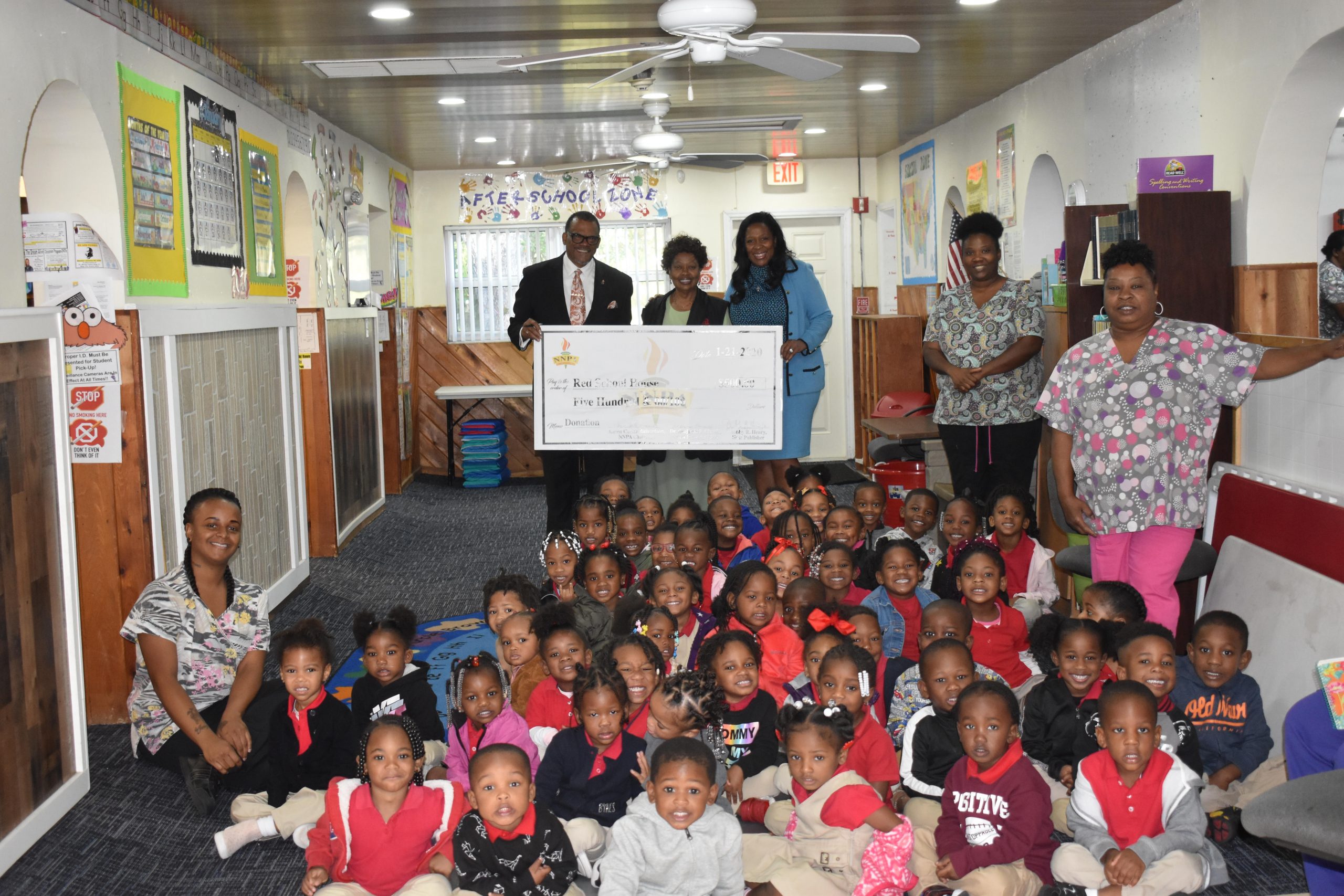
The students also attend field trips to all Disney on Ice productions, circus performances, Sesame Street performances and any cultural and fine arts performances that will enhance their exposure to appreciate the world of fine arts, entertainment and community activities. Twice a year, the performing arts skills of the students (ages 2 thru 5) are displayed at their annual Christmas program in December and at the Graduation performance held in May.
In the month of April, they host a Kiddie Prom that is held at the Elegant Signature Grand in Davie, FL. In the month of November, they have an etiquette class for all the 4- and 5-year-old students, where they dress up (the boys in their dressy attire with a $2.00 tip in their wallet, and the girls in their dressy attire with a purse on their arms).
The Red School House students are picked up by limousine service and taken to the Cheesecake Factory in downtown Fort Lauderdale where they dine for lunch and are taught how to model good behavior and manners.
Since inception, The Red School House has grown from 25 students to over 160 students. Even more impressive are the number of former students who are now staff members and some staff members who have worked for The Red School House for up to 40 years.
The Red School House has been in business for 52 years and has never received any federal funding, primarily because they didn’t want to change their curriculum.
“We are still as strong today as we were on that September day in 1968,” Gwendolyn states. “Our purpose has become our passion, to make a difference in our community, to care for children in providing a safe and nurturing environment, to provide educational excellence for each child. We are a traditional school with traditional values and a whole lot of love.”
This is a monumental initiative for the NNPA and is consistent with its overall mission and vision. Since its founding exactly 80 years ago, the NNPA has consistently been the voice of the Black community and an incubator for the news that makes history and impacts the country today and tomorrow.
From delivering news, information and commentary to being the largest and most influential Black-owned media resource in America to reach local markets with African American consumers. From helping to shape ideas and opinion to shaping thinking. From thought leadership to leading change. Each week 20 million Americans from all backgrounds seeking news from the Black perspective turn to NNPA newspapers.
This initiative will expand the impact and reach of the Black Press across America and in local markets to ensure the mission and vision of the NNPA remains relevant.
To learn more about The Red School House or to make a donation, please call 954.249.2901 or send it to 1205 N.W. 4th Street, Fort Lauderdale, Florida 33312.
Jeffrey Boney is a political analyst and frequent contributor for the NNPA Newswire and BlackPressUSA.com and the associate editor for the Houston Forward Times newspaper. Jeffrey is an award-winning journalist, dynamic, international speaker, experienced entrepreneur and business development strategist. Follow Jeffrey on Twitter @realtalkjunkies.
#NNPA BlackPress
IN MEMORIAM: Ramona Edelin, Influential Activist and Education Advocate, Dies at 78
NNPA NEWSWIRE — Born on September 4, 1945, in Los Angeles, California, activist Ramona Edelin’s early years were marked by a commitment to education and social justice. According to her HistoryMakers biography, after graduating from Fisk University with a Bachelor’s degree in 1967, she pursued further studies at the University of East Anglia in England. She earned her master’s degree before completing her Ph.D. at Boston University in 1981.
The post IN MEMORIAM: Ramona Edelin, Influential Activist and Education Advocate, Dies at 78 first appeared on BlackPressUSA.

By Stacy M. Brown, NNPA Newswire Senior National Correspondent
@StacyBrownMedia
Once upon a time, Black Americans were simply known as colored people, or Negroes. That is until Ramona Edelin came along. The activist, renowned for her pivotal roles in advancing civil rights, education reform, and community empowerment, died at her D.C. residence last month at the age of 78. Her death, finally confirmed this week by Barnaby Towns, a communications strategist who collaborated with Dr. Edelin, was attributed to cancer.
Born on September 4, 1945, in Los Angeles, California, Edelin’s early years were marked by a commitment to education and social justice. According to her HistoryMakers biography, after graduating from Fisk University with a Bachelor’s degree in 1967, she pursued further studies at the University of East Anglia in England. She earned her master’s degree before completing her Ph.D. at Boston University in 1981.
Edelin’s contributions to academia and activism were manifold. She was pivotal in popularizing the term “African American” alongside Rev. Jesse L. Jackson in the late 1980s.
Jackson had announced the preference for “African American,” speaking for summit organizers that included Dr. Edelin. “Just as we were called Colored, but were not that, and then Negro, but not that, to be called Black is just as baseless,” he said, adding that “African American” “has cultural integrity” and “puts us in our proper historical context.”
Later, Edelin told Ebony magazine, “Calling ourselves African Americans is the first step in the cultural offensive,” while linking the name change to a “cultural renaissance” in which Black Americans reconnected with their history and heritage.
“Who are we if we don’t acknowledge our motherland?” she asked later. “When a child in a ghetto calls himself African American, immediately he’s international. You’ve taken him from the ghetto and put him on the globe.”
The HistoryMakers bio noted that Edelin’s academic pursuits led her to found and chair the Department of African American Studies at Northeastern University, where she established herself as a leading voice.
Transitioning from academia to advocacy, Edelin joined the National Urban Coalition in 1977, eventually ascending to president and CEO. During her tenure, she spearheaded initiatives such as the “Say Yes to a Youngster’s Future” program, which provided crucial support in math, science, and technology to youth and teachers of color in urban areas. Her biography noted that Edelin’s efforts extended nationwide through partnerships with organizations like the National Science Foundation and the United States Department of Education.
President Bill Clinton recognized Edelin’s expertise by appointing her to the Presidential Board on Historically Black Colleges and Universities in 1998. She also co-founded and served as treasurer of the Black Leadership Forum, solidifying her standing as a respected leader in African American communities.
Beyond her professional achievements, Edelin dedicated herself to numerous boards and committees, including chairing the District of Columbia Educational Goals 2000 Panel and contributing to the Federal Advisory Committee for the Black Community Crusade for Children.
Throughout her life, Edelin received widespread recognition for her contributions. Ebony magazine honored her as one of the 100 Most Influential Black Americans, and she received prestigious awards such as the Southern Christian Leadership Award for Progressive Leadership and the IBM Community Executive Program Award.
The post IN MEMORIAM: Ramona Edelin, Influential Activist and Education Advocate, Dies at 78 first appeared on BlackPressUSA.
#NNPA BlackPress
Tennessee State University Board Disbanded by MAGA Loyalists as Assault on DE&I Continues
NNPA NEWSWIRE — Recent legislative actions in Tennessee, such as repealing police reform measures enacted after the killing of Tyre Nichols, underscore a troubling trend of undermining local control and perpetuating racist agendas. The new law preventing local governments from restricting police officers’ authority disregards community efforts to address systemic issues of police violence and racial profiling.
The post Tennessee State University Board Disbanded by MAGA Loyalists as Assault on DE&I Continues first appeared on BlackPressUSA.
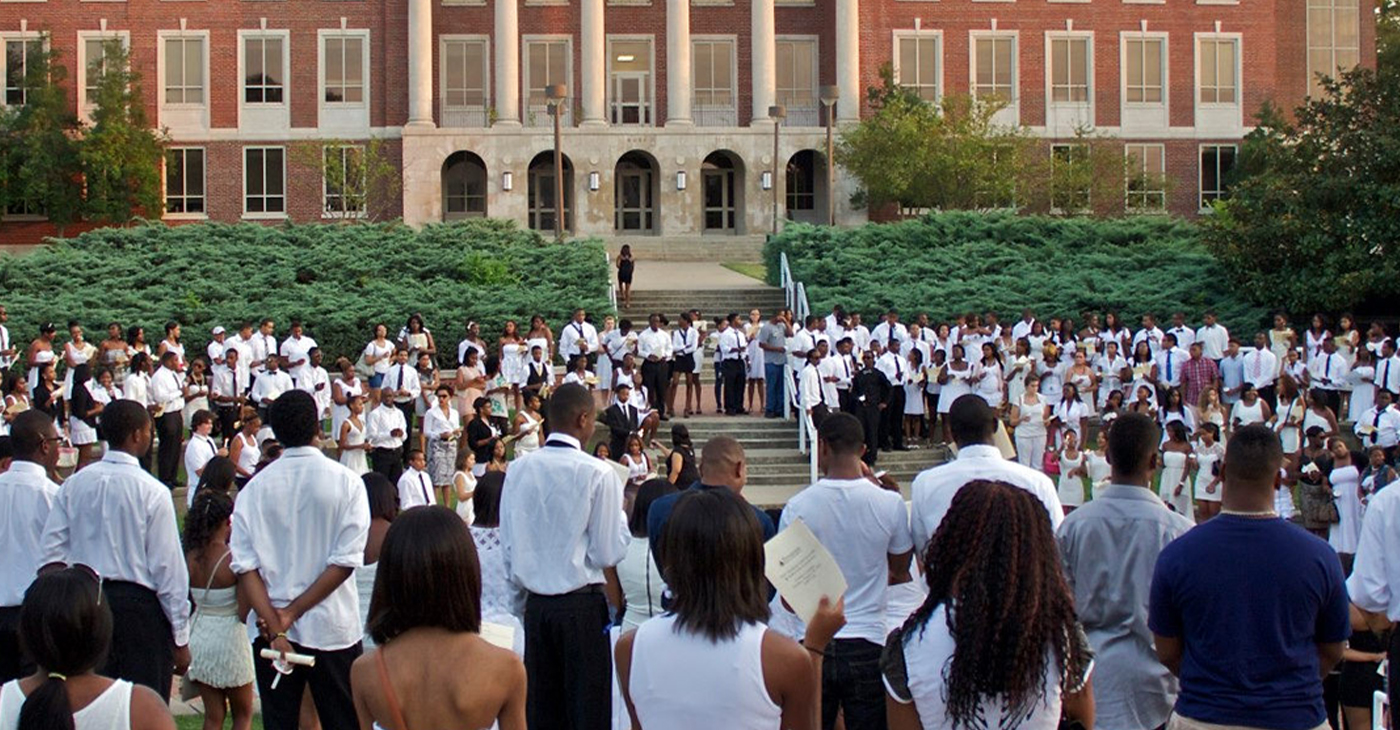
By Stacy M. Brown, NNPA Newswire Senior National Correspondent
@StacyBrownMedia
Tennessee State University (TSU), the state’s only public historically Black college and university (HBCU), faces a tumultuous future as Gov. Bill Lee dissolved its board, a move supported by racist conservatives and MAGA Republicans in the Tennessee General Assembly, who follow the lead of the twice-impeached, four-times indicted, alleged sexual predator former President Donald Trump. Educators and others have denounced the move as an attack on diversity, equity, and inclusion (DE&I) and a grave setback for higher education.
Critics argue that TSU’s purported financial mismanagement is a manufactured crisis rooted in decades of underinvestment by the state government. They’ve noted that it continues a trend by conservatives and the racist MAGA movement to eliminate opportunities for Blacks in education, corporate America, and the public sector.
Gevin Reynolds, a former speechwriter for Vice President Kamala Harris, emphasizes in an op-ed that TSU’s financial difficulties are not the result of university leadership because a recent audit found no evidence of fraud or malfeasance.
Reynolds noted that the disbanding of TSU’s board is not an isolated incident but part of a broader assault on DE&I initiatives nationwide. Ten states, including Tennessee, have enacted laws banning DE&I policies on college campuses, while governors appointing MAGA loyalists to university trustee positions further undermine efforts to promote inclusivity and equality.
Moreover, recent legislative actions in Tennessee, such as repealing police reform measures enacted after the killing of Tyre Nichols, underscore a troubling trend of undermining local control and perpetuating racist agendas. The new law preventing local governments from restricting police officers’ authority disregards community efforts to address systemic issues of police violence and racial profiling.
The actions echo historical efforts to suppress Black progress, reminiscent of the violent backlash against gains made during the Reconstruction era. President Joe Biden warned during an appearance in New York last month that Trump desires to bring the nation back to the 18th and 19th centuries – in other words, to see, among other things, African Americans back in the chains of slavery, women subservient to men without any say over their bodies, and all voting rights restricted to white men.
The parallels are stark, with white supremacist ideologies used to justify attacks on Black institutions and disenfranchise marginalized communities, Reynolds argued.
In response to these challenges, advocates stress the urgency of collective action to defend democracy and combat systemic racism. Understanding that attacks on institutions like TSU are symptomatic of broader threats to democratic norms, they call for increased civic engagement and voting at all levels of government.
The actions of people dedicated to upholding the principles of inclusivity, equity, and justice for all will determine the outcome of the ongoing fight for democracy, Reynolds noted. “We are in a war for our democracy, one whose outcome will be determined by every line on every ballot at every precinct,” he stated.
The post Tennessee State University Board Disbanded by MAGA Loyalists as Assault on DE&I Continues first appeared on BlackPressUSA.
#NNPA BlackPress
Braxton Haulcy and the Expansion of Walker|West Music Academy
May 24, 2023 – Walker West Music Academy gets an early start on expansion. Join us for a Wednesday episode of The …
The post Braxton Haulcy and the Expansion of Walker|West Music Academy first appeared on BlackPressUSA.

May 24, 2023 – Walker West Music Academy gets an early start on expansion. Join us for a Wednesday episode of The …
The post Braxton Haulcy and the Expansion of Walker|West Music Academy first appeared on BlackPressUSA.
-

 Activism4 weeks ago
Activism4 weeks agoOakland Post: Week of March 27 – April 2, 2024
-

 #NNPA BlackPress4 weeks ago
#NNPA BlackPress4 weeks agoCOMMENTARY: D.C. Crime Bill Fails to Address Root Causes of Violence and Incarceration
-

 #NNPA BlackPress4 weeks ago
#NNPA BlackPress4 weeks agoMayor, City Council President React to May 31 Closing of Birmingham-Southern College
-

 #NNPA BlackPress4 weeks ago
#NNPA BlackPress4 weeks agoBeloved Actor and Activist Louis Cameron Gossett Jr. Dies at 87
-

 Community1 week ago
Community1 week agoFinancial Assistance Bill for Descendants of Enslaved Persons to Help Them Purchase, Own, or Maintain a Home
-

 Activism3 weeks ago
Activism3 weeks agoOakland Post: Week of April 3 – 6, 2024
-

 Business1 week ago
Business1 week agoV.P. Kamala Harris: Americans With Criminal Records Will Soon Be Eligible for SBA Loans
-

 Community1 week ago
Community1 week agoAG Bonta Says Oakland School Leaders Should Comply with State Laws to Avoid ‘Disparate Harm’ When Closing or Merging Schools

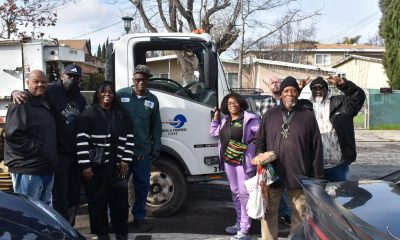

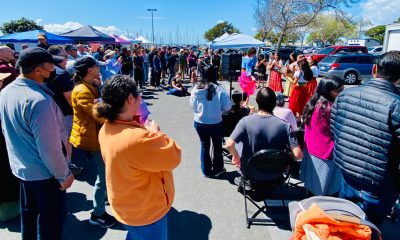







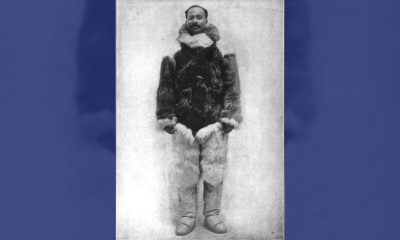











































Pingback: Johnson Art Auction Sets Records - journal-isms.com